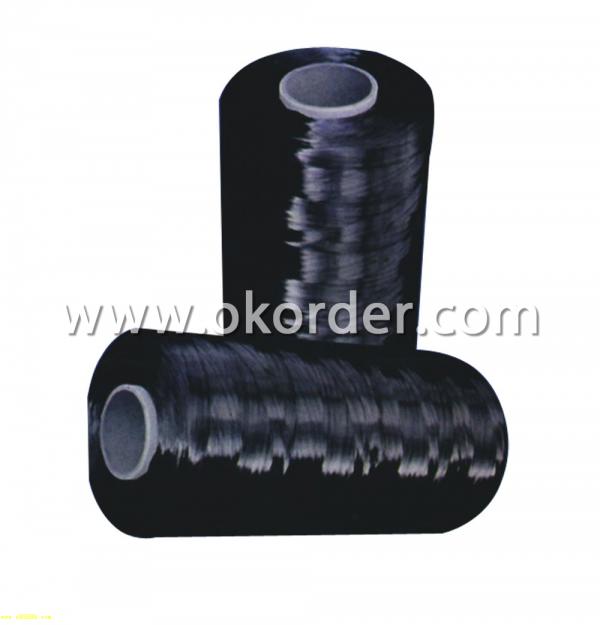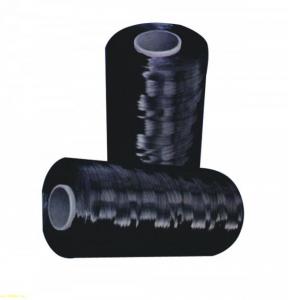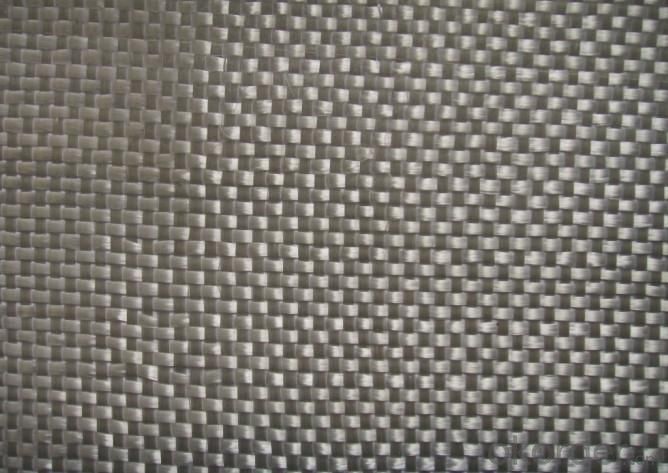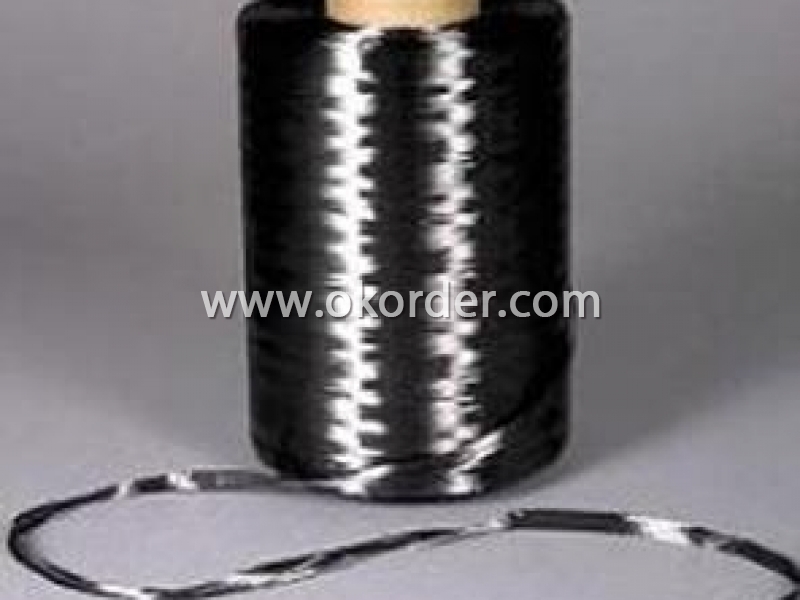Carbon Fiber 3K-T400
- Loading Port:
- China Main Port
- Payment Terms:
- TT or LC
- Min Order Qty:
- 100Kg m.t.
- Supply Capability:
- 1000Ton m.t./month
OKorder Service Pledge
OKorder Financial Service
You Might Also Like
Specifications Carbon Fiber 3K-T400
1. Material: carbonized polyacrylonitrile fiber
2. Filament number:3k
3. Fiber type: T400
4. Tensile strength: 360kgf/mm2
General Data of Carbon Fiber 3K-T400
Weaving Style: Unidirectional, Plain, Twill
Input Available: 3k, 6k, 12k Carbon fiber
Weight: 15 0 ~ 600g / m2
Roll length: To be specified
Typical Rangeof Carbon Fiber 3K-T400
Remark :The above parameters are only in common condition. In case of order, the parameters are subject to the customer's confirmation.
CWP : Carbon plain weave fabric
CWT : Carbon twill weave fabric
CWU : Carbon woven unidirectional fabric
Packaging of Carbon Fiber 3K-T400
Product is manufactured in form of a roll wound on a paper tube and then packed in a plastic film and placed within a cardboard carton. Rolls can be loaded into a container directly or on pallets.
Storage of Carbon Fiber 3K-T400
It is recommended that the carbon fiber fabric are stored in a cool and dry environment. Recommended temperature range of storage is between 10 ~ 30 degree and relative humidity between 50 ~ 75%.The carbon fiber fabric should remain in the packaging until just prior to use.
Packaging & Delivery of Carbon Fiber 3K-T400
Packaging Detail: carton
Delivery Detail: within 20 days

- Q: Is carbon a metal or non-metal?
- Carbon is a non-metal.
- Q: What is the role of carbon in the formation of coal, oil, and natural gas?
- The formation of coal, oil, and natural gas relies heavily on carbon. Carbon is a crucial component of these fossil fuels, along with varying amounts of hydrogen, sulfur, nitrogen, and other elements. To begin the formation process, organic matter, such as dead plants and marine organisms, accumulates in oxygen-limited environments. Over a span of millions of years, the organic matter undergoes intense heat and pressure, resulting in a process called carbonization. During carbonization, the carbon within the organic matter undergoes chemical transformations, converting it into solid, liquid, or gaseous hydrocarbon compounds. The specific conditions under which carbonization takes place determine the specific type of fossil fuel that will be produced. In the case of coal, the organic matter primarily consists of land-based plant material. Through high pressure and temperature, carbonization converts this plant material into solid coal. The duration and intensity of the carbonization process determine the carbon content of the resulting coal. Different types of coal, such as lignite, bituminous, and anthracite, exhibit varying carbon content and energy density. Conversely, oil is formed from marine organisms like plankton and algae. As these organisms die, they descend to the ocean or lake floor and gradually become buried beneath layers of sediment. Over time, the heat and pressure cause carbonization, transforming the organic matter into a liquid hydrocarbon mixture known as crude oil. This crude oil can subsequently undergo further processing to yield various petroleum products. Natural gas, on the other hand, consists primarily of methane (CH4) and forms under similar conditions as oil. However, the carbonization process occurs at higher temperatures and pressures, leading the organic matter to decompose into gaseous hydrocarbon compounds. Natural gas can be found alongside oil deposits or trapped within underground rock formations, such as shale or sandstone. In summary, carbon serves as the essential foundation for the formation of coal, oil, and natural gas. Its presence within organic matter, combined with optimal conditions of heat, pressure, and time, culminates in the creation of these valuable energy resources that significantly contribute to powering our modern world.
- Q: How does carbon contribute to global warming?
- Carbon contributes to global warming through the greenhouse effect. When carbon dioxide (CO2) and other greenhouse gases are released into the atmosphere, they trap heat from the sun and prevent it from escaping back into space. This leads to an increase in the Earth's surface temperature, causing global warming. The primary source of carbon emissions is the burning of fossil fuels such as coal, oil, and natural gas for energy production, transportation, and industrial processes. These activities release large amounts of CO2 into the atmosphere, which accumulates over time and enhances the greenhouse effect. Additionally, deforestation and land-use changes also contribute to rising carbon levels. Trees and plants absorb CO2 as part of photosynthesis, acting as a natural carbon sink. However, when forests are cleared, this stored carbon is released back into the atmosphere. Moreover, the loss of trees reduces the overall capacity to absorb CO2, exacerbating the problem. The consequences of increased carbon emissions are far-reaching. Rising temperatures result in the melting of polar ice caps and glaciers, leading to sea-level rise and threatening coastal communities. Furthermore, carbon-driven global warming disrupts weather patterns, causing extreme weather events such as hurricanes, droughts, and heatwaves. To mitigate the impact of carbon on global warming, efforts must be made to reduce carbon emissions. This can be achieved through transitioning to renewable energy sources like solar and wind, improving energy efficiency, promoting sustainable practices in agriculture and forestry, and implementing policies that encourage carbon capture and storage. Addressing carbon emissions is crucial in combating global warming and its associated consequences. By understanding the role of carbon in the greenhouse effect, we can work towards a sustainable future that minimizes the harmful effects of climate change.
- Q: Where are carbon fiber sheets and carbon fiber sheets used?
- Carbon reinforced materials, carbon fiber cloth is mainly used for concrete beam flexural and shear strengthening, flexural reinforcement, column reinforcement plate; plant, buildings, schools, hospitals and other industrial and civil building reinforcement; Luqiao, water conservancy, nuclear power and energy infrastructure reinforcement.Carbon fiber board is mainly used for concrete structure plate and beam repairing and reinforcing plate; opening wall and surrounding reinforcement; the wooden building beam reinforcement; reinforced bridge, bridge pier, truss; tunnel, cable pipeline repairing and reinforcing.
- Q: What are the different types of carbon-based plastics?
- Carbon-based plastics come in various types, each possessing distinct characteristics and uses. Among the commonly known variants are: 1. Polyethylene (PE): This plastic, available in high-density polyethylene (HDPE) and low-density polyethylene (LDPE) forms, is widely employed due to its strength, flexibility, and resistance to chemicals. It finds applications in packaging, pipes, and toys. 2. Polypropylene (PP): Renowned for its high melting point, chemical resistance, and durability, PP is a popular choice for automotive parts, appliances, and packaging. 3. Polystyrene (PS): PS, a rigid plastic, frequently features in disposable products like food containers and packaging materials. Its lightweight nature and good insulation properties make it advantageous. 4. Polyvinyl Chloride (PVC): PVC, a versatile plastic that can be flexible or rigid based on its composition, sees wide usage in construction materials, pipes, cables, and vinyl flooring. 5. Polyethylene Terephthalate (PET): PET, a lightweight and sturdy plastic, is commonly employed in beverage bottles, food packaging, and textile fibers. It is renowned for its exceptional resistance to gas and moisture. 6. Polycarbonate (PC): PC, a transparent plastic, stands out for its high resistance to impact and heat. It is often utilized in eyewear, automotive parts, and electronic devices. These examples represent just a fraction of the carbon-based plastics available in the market. Numerous other variations and blends exist, and the choice of plastic depends on factors such as intended application, desired properties, and environmental considerations.
- Q: Advantages of carbon fiber
- Carbon fiber axial strength and high modulus, no creep, fatigue resistance, between heat and electrical conductivity between the metal and non metal, low thermal expansion coefficient, good corrosion resistance, low fiber density, good permeability of X ray.
- Q: What is carbon nanoelectronics?
- Carbon nanoelectronics refers to the field of research and development that focuses on utilizing carbon-based materials, such as carbon nanotubes or graphene, for the creation and advancement of electronic devices and components on a nanoscale level. These nanoscale carbon structures possess unique electrical properties that make them highly desirable for applications in a wide range of electronic devices, including transistors, sensors, and interconnects. One of the key advantages of carbon nanoelectronics is the exceptional electrical conductivity and thermal properties of carbon nanomaterials. Carbon nanotubes, for instance, exhibit excellent electrical conductivity, comparable to copper, but with a much smaller footprint. This property allows for the creation of smaller and more efficient electronic devices, leading to advancements in areas such as miniaturization and energy efficiency. Another noteworthy aspect of carbon nanoelectronics is the immense strength and flexibility of carbon nanomaterials. Carbon-based structures like graphene possess exceptional mechanical properties, making them highly durable and resilient. This property enables the production of flexible and wearable electronic devices that can conform to various surfaces, opening up new possibilities for electronics design and integration. Additionally, carbon nanoelectronics offers the potential for high-speed and low-power electronic devices. The unique electronic properties of carbon nanomaterials, such as their ability to carry electric charge at an extremely high speed, make them suitable for high-frequency applications. Furthermore, the low power consumption of carbon nanomaterials can lead to the development of energy-efficient electronic devices. Overall, carbon nanoelectronics holds great promise for revolutionizing the field of electronics by enabling the creation of smaller, faster, and more energy-efficient devices. Continued research and development in this field are expected to lead to breakthroughs in various industries, including computing, telecommunications, healthcare, and energy.
- Q: How does carbon impact the formation and intensity of hurricanes?
- Carbon, specifically in the form of carbon dioxide, plays a significant role in impacting the formation and intensity of hurricanes. The increase in carbon emissions due to human activities, such as burning fossil fuels, deforestation, and industrial processes, has led to a rise in atmospheric carbon dioxide levels. This, in turn, contributes to the phenomenon known as global warming. Global warming, caused by the greenhouse effect, leads to an increase in sea surface temperatures. Warmer ocean waters provide the necessary energy and moisture for hurricanes to form and intensify. As the atmosphere warms, it can hold more water vapor, which acts as fuel for hurricanes, increasing their potential for stronger and more intense storms. The warming of the atmosphere also alters the atmospheric conditions that influence hurricane formation. It changes the vertical wind shear, which is the difference in wind speed and direction at different altitudes. Low wind shear is favorable for hurricane development, as it allows the storm to organize and strengthen. However, global warming can disrupt this balance and create unfavorable wind shear patterns, inhibiting hurricane development. Furthermore, the increased carbon dioxide levels in the atmosphere contribute to ocean acidification. As carbon dioxide dissolves in seawater, it forms carbonic acid, which lowers the pH of the ocean. Acidic waters can have detrimental effects on marine life, including coral reefs, which act as natural barriers against storm surges during hurricanes. The degradation of these ecosystems weakens their ability to protect coastal communities from the destructive impacts of hurricanes. In summary, carbon emissions and the subsequent increase in carbon dioxide levels have a profound impact on the formation and intensity of hurricanes. The warming of the atmosphere and ocean, along with changes in wind shear patterns, create conditions that favor the development and intensification of hurricanes. Additionally, ocean acidification resulting from excessive carbon dioxide levels weakens natural defenses against storm surges. It is crucial to address the issue of carbon emissions and reduce our carbon footprint to mitigate the potential consequences of climate change and its impact on hurricanes.
- Q: What are carbon nanomaterials?
- Carbon nanomaterials are a class of materials that are composed of carbon atoms arranged in various structures at the nanoscale. These structures can include carbon nanotubes, fullerenes, and graphene. Carbon nanotubes are cylindrical structures made up of rolled-up sheets of graphene, while fullerenes are closed-cage molecules consisting of carbon atoms. Graphene, on the other hand, is a single layer of carbon atoms arranged in a hexagonal lattice. Carbon nanomaterials possess unique properties that make them highly desirable for a wide range of applications. They exhibit exceptional mechanical strength, high electrical and thermal conductivity, as well as excellent chemical stability. These properties arise from the strong covalent bonds between carbon atoms and the unique arrangements of these atoms in the nanoscale structures. Due to their remarkable characteristics, carbon nanomaterials have found numerous applications in various fields. They are used in electronics and computing devices, where their high electrical conductivity and small size make them ideal for creating faster, smaller, and more efficient components. Carbon nanotubes have also been utilized in composite materials to enhance their mechanical strength and durability. Furthermore, carbon nanomaterials have shown promise in the field of medicine and healthcare. They can be used for drug delivery systems, where they can encapsulate and transport drugs to specific targets in the body. Carbon nanomaterials have also been investigated for their antibacterial properties, making them potential candidates for developing antimicrobial coatings and surfaces. Overall, carbon nanomaterials are a diverse class of materials with exceptional properties that have led to numerous exciting applications in various industries. As research continues, their potential uses are likely to expand, revolutionizing fields such as electronics, medicine, and materials science.
- Q: The difference between graphite and carbon
- There are three kinds of carbon allotropes, namely diamond, graphite and amorphous carbon.Graphite is a crystalline mineral of carbonaceous elements, and its crystalline framework is hexagonal layered structure
1. Manufacturer Overview
| Location | Shanghai, China |
| Year Established | 1995 |
| Annual Output Value | Above US$ 20,000 |
| Main Markets | Mid East; Eastern Europe; North America |
| Company Certifications | ISO 9002:2000 |
2. Manufacturer Certificates
| a) Certification Name | |
| Range | |
| Reference | |
| Validity Period |
3. Manufacturer Capability
| a) Trade Capacity | |
| Nearest Port | Shanghai |
| Export Percentage | 20% |
| No.of Employees in Trade Department | 100 People |
| Language Spoken: | Chinese |
| b) Factory Information | |
| Factory Size: | Above 100,000 square meters |
| No. of Production Lines | Above 5 |
| Contract Manufacturing | OEM Service Offered; Design Service Offered |
| Product Price Range | Average |
Send your message to us
Carbon Fiber 3K-T400
- Loading Port:
- China Main Port
- Payment Terms:
- TT or LC
- Min Order Qty:
- 100Kg m.t.
- Supply Capability:
- 1000Ton m.t./month
OKorder Service Pledge
OKorder Financial Service
Similar products
Hot products
Hot Searches
Related keywords






























